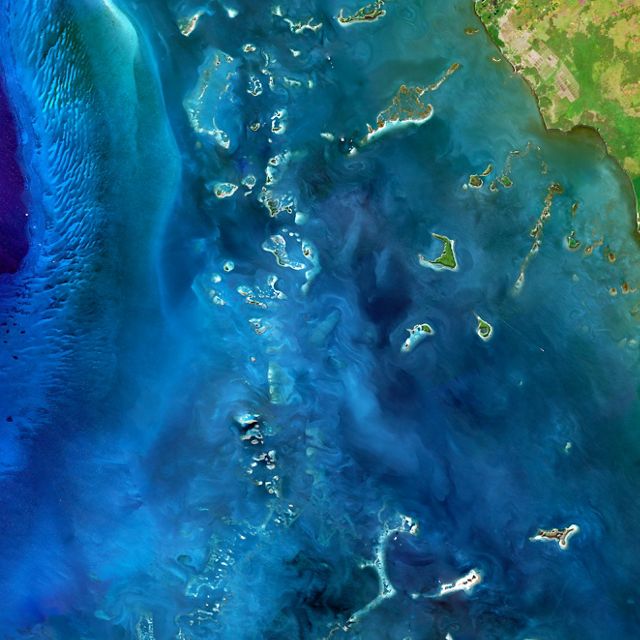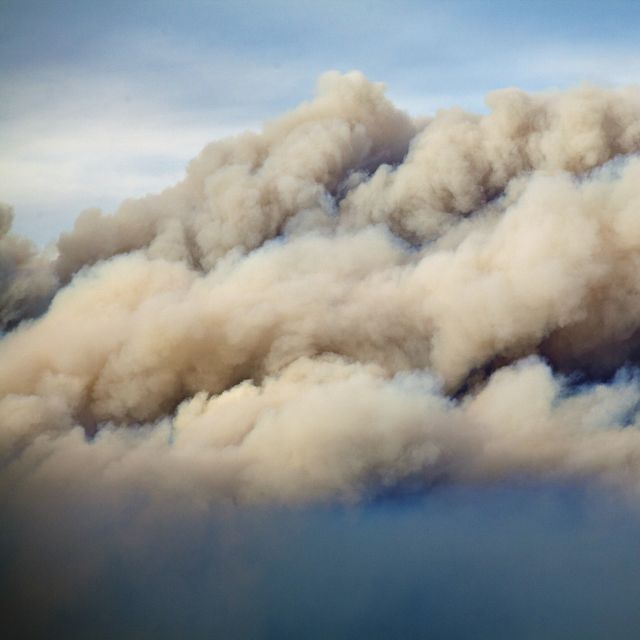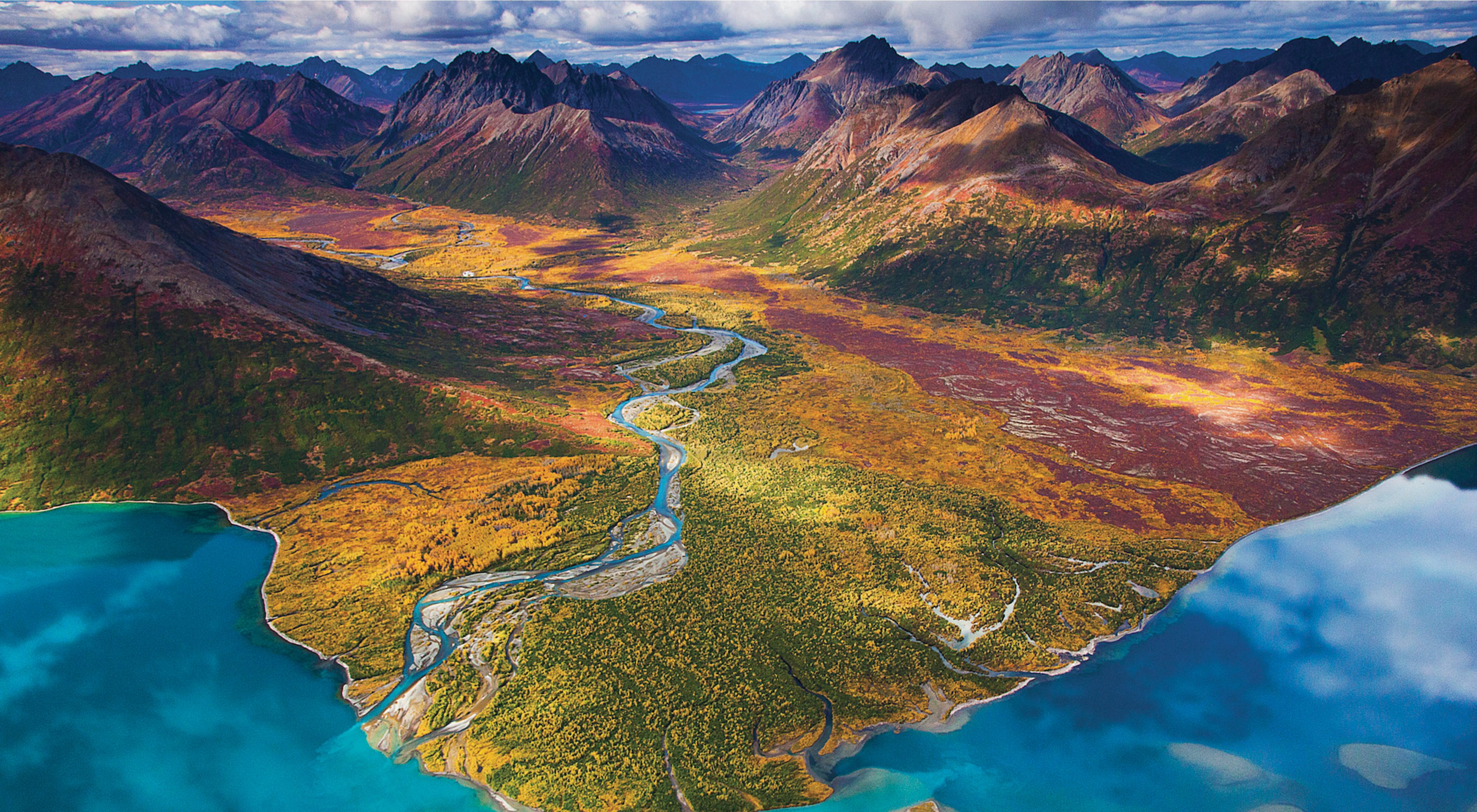The transformation we need in an era of change comes now, at a time of unprecedented challenges.
All that we face today calls on us to work for meaningful and lasting changes that will lead us to a world of new possibilities for people and nature. For The Nature Conservancy, this is the challenge of our time. It’s also the moment for which 70 years of experience and commitment have prepared us. Now is the time to act; now is the time to transform our world and to protect the lands and waters on which all life depends.
PDF en Español | 繁體中文PDF | 简体中文PDF
PDF kwa Swahili | PDF Bahasa Indonesia | PDF in English
From the CEO
To Build a Future for Nature Now
In May 2020, I joined The Nature Conservancy as chief executive officer—one of the proudest and most joyous days in my 25-year career in conservation. Of course, the first few weeks did not go as I expected. Or the first few months. The deadly COVID-19 pandemic surged, wreaking havoc on families, health care systems and economies around the world. Nearly a year later, many of us continue to work from home and maintain physical distance from friends, colleagues and loved ones.
While it was a challenging first chapter for me at TNC, an organization I had long admired and hoped to work for one day, we were able to forge connections and make remarkable progress.
I “met” thousands of colleagues and hundreds of trustees and supporters on Zoom instead of in person. My colleagues and I learned about our partnerships with Indigenous communities to use fire to restore healthy forests through conversations and photos, without ever feeling the heat of a controlled burn. We celebrated the creation of Colorado’s new 20,000-acre Fishers Peak State Park without looking up at the towering mountains. And we learned how to plant cacao trees via a social messaging app alongside planters in Brazil without holding a seedling in our hands or smelling the damp soil of the surrounding rainforest. You can learn more about these and other TNC projects in the stories that follow.
Many of the challenges that marked 2020—a global pandemic, record temperatures, fires and hurricanes, and long-overdue reckonings with racist systems and calls for equity—are continuing to impact our lives. But 2020 was also marked by a spirit of resilience, tenacity and creativity. The world came together to tackle problems in new ways, with unprecedented speed and collaboration. Never before has the scientific community rallied so many minds and resources so quickly. The development of powerful new vaccines in less than a year has raised hopes for quick action on other global threats, like the climate emergency.
This past year we learned, with more clarity than ever before, just how interconnected our health and well-being are to the health of our planet. In May 2020, the World Health Organization published its Manifesto for a Healthy Recovery from COVID-19, which recommends protecting and preserving nature as a top priority. Protecting nature supports economies, provides clean air and water and healthy food, and it can also reduce the risk of future zoonotic disease outbreaks, which science tells us are driven in part by habitat loss and climate change.
Indeed, the pandemic revealed the power of nature to help heal—not only through nature-driven solutions like regenerative agriculture, carbon sequestration and clean-energy sources like wind and solar but also in helping many people manage life in a world turned upside down. In 2020, visits to natural areas and parks expanded to record levels, outdoor gear and bicycle sales boomed, backyard birding took off in popularity, and hiking and nature walks surged. Around the world, people rekindled their connections to nature and sought solace in the outdoors.
With this optimistic spirit, I reflect on all that The Nature Conservancy was able to accomplish with the help of partners, supporters and our volunteer leadership in 2020—and look ahead to a promising decade of nature conservation at a global scale. I am hopeful we can harness the tenacity and resilience that all of us developed in this difficult year to build a better future together.
Warm wishes,
Jennifer Morris
Chief Executive Officer, The Nature Conservancy
Our Priority Achievements

Conservation Update
Protect Oceans, Lands and Water
How humanity cares for the land and water that sustain us matters now more than ever.

Conservation Update
Provide Food and Water Sustainably
Nature brings food to our table and water to our taps. The path ahead demands that we innovate now.

Conservation Update
Tackle Climate Change
Climate change is the greatest challenge of our time. The fix is global, it’s local, and it starts now.
Financial Overview for Fiscal Year 2021
Letter From the Chief Finance and Administrative Officer
In fiscal year 2021, we entered our first full year of operating in the midst of the COVID-19 global pandemic, and we adjusted our operations and tactics in anticipation of a possibly sizable decline in revenue. However, a combination of factors—economic stimuli by governments around the world, a sharp rebound in financial market performance, and the continuing commitment and generosity of our supporters—helped make it our most successful financial year on record as a revenue matter. We also saw our 11th consecutive year of improvement in the strength of our balance sheet, which positions us to aggressively tackle our ambitious new 2030 Goals.
During this challenging year, the priority focus of our management team was twofold.
First, the pandemic required undertaking work differently and more creatively, such as collaborating primarily over video conferences rather than in person. A critical priority was tending to the safety and well-being of our staff to ensure that we could continue to advance our mission. We dedicated significant energy to enabling our staff, supporters and conservation partners to engage virtually, and to providing new tools, equipment and business processes to staff, allowing them to safely, securely and effectively conduct business remotely.
Second, we completed the articulation of our 2030 Goals—a long-term vision for the ambitious but essential work we must do over the next decade to protect biodiversity and reduce the impacts of climate change in collaboration with partners around the globe. We focused our efforts and resources on accelerating our conservation plans, enabled by leading-edge financial, information technology, and investment management tools and strategies.
In total, financial results achieved during the last year outperformed our initial expectations and, as such, allowed for an increase in spending on conservation activities, despite prudent budgetary contractions planned in response to the pandemic. The increase in conservation activities was offset by a somewhat smaller amount of spending on conservation land purchases, which varies from year to year.
Fundraising from private donors reached a record high, buoyed by a gift of $100 million from the Bezos Earth Fund to support climate outcomes across multiple continents. Private donor support increased across all major segments, and we are grateful for the generosity expressed by so many of our supporters, whether by joining us for virtual visits and trips rather than in person, or by expanding the flexibility of their gifts to accommodate our unusual operating circumstances. Investment income was the organization’s largest driver of revenue growth, reflecting a buoyant equity market and active management decisions by our team of in- vestment professionals. In the year ahead, The Nature Conservancy will continue to accelerate the pace of investment in our ambitious 2030 conservation goals, and to build an even stronger foundation of operational excellence to support our work. We are, as always, grateful to our donors, collaborators and supporters for their partnership in protecting nature’s biodiversity and strengthening its resilience in the face of a changing climate during this critical decade for the planet.
From the Chief Finance Officer, Leonard Williams
Financial Overview

During the past fiscal year, TNC’s leadership gave no small measure of time and attention to addressing and correcting for the effects on our employees, conservation work and fundraising of the COVID-19 global pandemic that shook the world’s health care, cultural and financial institutions to their core. In response to the pandemic, TNC made many significant changes to how we did business—closing our offices globally, moving our 4,000-plus staff to a virtual work environment and developing creative ways to remain connected to our donors and supporters.
Management adopted an appropriately conservative approach to expense management in that unprecedented year, pulling back as markets plummeted in the spring by reducing spending by 20%, cutting top salaries by up to 15%, freezing all pay increases, making targeted reductions to our workforce and halting nearly all travel.
Fortunately, economic stimulus measures taken by leading economies around the globe helped stabilize financial markets and enabled TNC’s supporters to continue to generously contribute to the organization. In fact, with the engagement and generosity of our donors and supporters, FY20 was our best year on record in terms of top-line revenues. The conclusion of the Our World Campaign and a number of unique fundraising opportunities, including completing the MacArthur Climate Challenge and raising several large donations to support TNC’s climate and Blue Bonds work, helped fuel this substantial growth.
In spite of the challenges caused by the pandemic, we were able to leverage our global reach and our capabilities in science and conservation—together with mobilizing nearly $1 billion in capital—to achieve significant conservation gains.
We further took the opportunity in FY20 to reassess the structure of our investment portfolio and implemented a number of strategies to improve portfolio health. This resulted in performance for the portfolio that outpaced our established benchmarks.
Looking forward and hoping for a vaccine-enabled return to normal, we see a business with an exceptionally strong balance sheet, continuing robust support from donors and contributors, a crisis-tested resilient workforce and culture all set to advance our ambitious mission to conserve the lands and waters on which all life depends.
Leonard Williams
Chief Finance Officer
Financial Summary
For the fiscal years ending on June 30, 2020 & 2019 (in thousands)
Note: The figures that appear in the financial summary shown are derived from the 2020 & 2019 consolidated financial statements that have been audited and have received an unqualified opinion.
| 2020 | 2019 | |
|---|---|---|
| Dues and private contributions | 783,245 | 595,311 |
| Government contributions | 126,423 | 127,764 |
| Total Dues & Contributions | 909,668 | 723,075 |
| Investment income | 78,252 | 93,994 |
| Other income | 93,178 | 139,021 |
| Land sales and gifts | 148,943 | 99,464 |
| Total Support & Revenue | 1,230,041 | 1,055,554 |
| 2020 | 2019 | 2020* | 2019* | |
|---|---|---|---|---|
| Conservation activities and actions | 536,341 | 520,142 | 53.0% | 49.2% |
| Purchases of conservation land and easements | 156,210 | 232,085 | 15.4% | 22.0% |
| Total Conservation Program Expenses & Purchases of Conservation Land & Easements | 692,551 | 752,227 | 68.5% | 71.2% |
| General and administrative | 180,679 | 161,705 | 17.9% | 15.3% |
| Fundraising and membership | 138,127 | 142,548 | 13.7% | 13.5% |
| Total support services | 318,806 | 304,253 | ||
| Total Expenses & Purchases of Conservation Land & Easements | 1,011,357 | 1,056,480 | ||
| Net Result—Support & Revenue Over Expenses & Purchases of Conservation Land & Easements1 | 218,684 | (926) |
* % of each dollar spent
| 2020 | 2019 | |
|---|---|---|
| Conservation lands | 2,150,851 | 2,128,184 |
| Conservation easements | 2,386,747 | 2,288,383 |
| Investments held for conservation projects | 941,950 | 774,397 |
| Endowment investments | 1,334,391 | 1,309,105 |
| Planned-giving investments | 315,736 | 322,475 |
| Property & equipment (net of depreciation) | 152,334 | 141,972 |
| Other assets 2 | 588,371 | 745,774 |
| Total Assets | 7,870,380 | 7,710,290 |
| Accounts payable and accrued liabilities | 145,425 | 219,410 |
| Notes payable | 338,123 | 398,491 |
| Other liabilities 3 | 420,291 | 375,754 |
| Total net assets | 6,966,541 | 6,716,635 |
| Total Liabilities & Net Assets | 7,870,380 | 7,710,290 |



